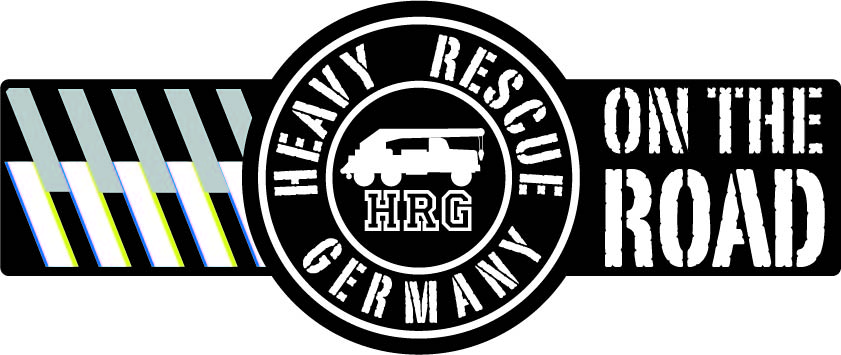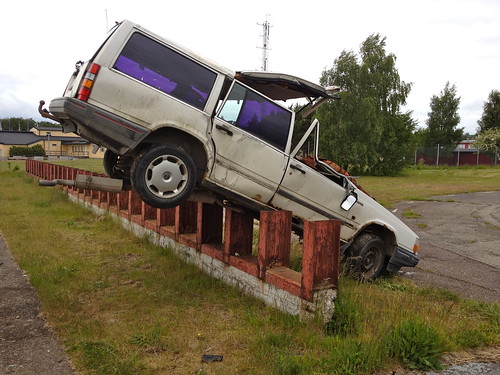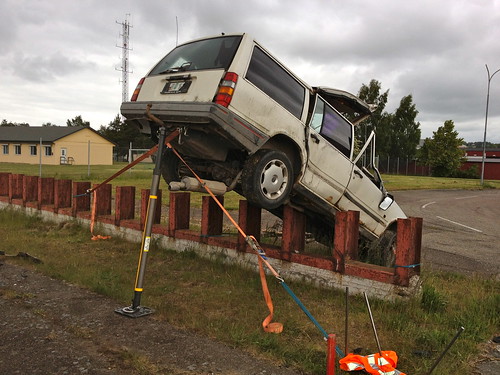Dieses Beispiel zeigt ganz anschaulich das Zusammenspiel zwischen Stützen und Spanngurten. Der PKW ist so auf der Barriere bzw. Leitplanke aufgesetzt, dass er fast schon pendelt. Um etwas zu stabilisieren, muss man sich einfach vorstellen, sowohl der PKW als auch der Untergrund wären aus nasser Seife: wohin bewegt es sich?
Hier sind zwei Hauptrichtungen auszumachen: einmal nach vorne, und einmal mit dem Heck nach unten. Dieses sind unsere Prioritäten um zu stabilisieren bzw. abzustützen.
This example shows the use of struts and ratchet belts. The car is balanced on top of a rail guard or concrete barrier. First, we must understand in which direction forces are working. To facilitate this, just imagine both the car and the underground consisting of wet soap: we have a movement tendency to the front as well as the back of the car wanting down. This will set out stabilisation priorities.
Hier also das Vorgehen:
Zunächst setzt man eine, oder nach Möglichkeit zwei Stützen unter das Heck. Dies stoppt die Abwärtsbewegung.
First the strut is set under the back of the car, stopping downwards movement.
Danach werden die Vorderräder mit Spanngurten gegen die Leitplanke gebunden: dies verhindert die Vorwärtsbewegung. Die Kippbewegung des PKW wird übrigens durch die Stütze verhindert.
Then, we apply rachtet belts to the front wheels, securing the car against movement along the length axis.
Zuletzt wird das Heck seitlich mit Spanngurten über Kreuz fixiert. In diesem Fall einmal links gegen die Leitplanke, einmal rechts mit einem Erdanker. PKW bombenfest, Patient kann nun gerettet werden. Gesamtzeit, ca. 5 Minuten.
Finally, the back of the car is tied sideways with ratchet belts, in this case to the guard rail and to a ground anchor. The car is absolutely fixed now, access to the patient is possible. Total time: about 5 Minutes.





